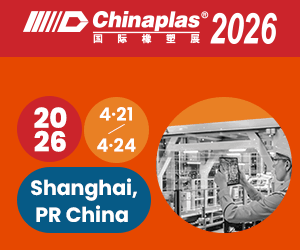Polyphenylene sulfide (PPS): Handling the Heat
From your air
fryer to your automobile, your smartphone to your curling iron, plastic
products that heat up are everywhere. But how is it possible? How does the high
heat not melt your favorite devices?
Meet polyphenylene
sulfide plastic or PPS plastic.
This engineering plastic (a resin made to handle mechanical stress and high temperatures) is in
high demand as manufacturers look to replace metals in industrial and consumer
applications.
Let’s learn
more about PPS.
The history of polyphenylene
sulfide plastic
As industry
and manufacturing evolved in the mid-20th century, calls for
materials that performed under extreme conditions got louder. Edmond Louis
Bayer, a chemist at Phillips Petroleum Company, answered that call with the
development of polyphenylene sulfide plastic in the early 1960s. By 1965, had
patented PPS material and
began commercially producing it under the
name Rytonâ. With the expiration of the
Phillips Petroleum patent in 1984, numerous companies entered the market,
including Kureha Corporation — a Japanese company producing PPS plastic under
the trade name Fortron®.
What is PPS
plastic?
PPS is a
high-performance thermoplastic polymer with a straight-chain
structure
of alternating bonds between phenyl groups (benzene rings) and sulfur (S).
Regardless of the manufacturer, the steps include:
about:blank
How many types
of PPS plastic are there?
Based on the
polymerization method, there are three types of PPS:
·
Cross-linked:
heat-treated in the presence of oxygen during the polymer manufacturing process
·
Semi-cross-linked:
Limited heat treatment to bond some of the chemical chains
·
Linear: No heat
treatment resulting in a removal of the cross-linking structure
Although there
are slight differences in physical properties and moldability, they are
collectively referred to as PPS. There are several ways to manufacture a PPS
polymer, including the Phillips Petroleum process (also called the Ryton PPS
process), the Macallum process and the Dow Chemical process. Polymerization
reactions, catalysts and final product properties are responsible for
production differences. Today, the Phillips Petroleum/Ryton PPS process remains
the most popular method.
What are the characteristics PPS plastic material?
PPS plastic is widely popular for its ability to withstand harsh environments. Its features
include:
·
High strength and rigidity
·
Thermal stability (difficult to
burn)
·
Resistance to
water, organic solvents, oil and other chemicals
·
Dimensional stability
·
Easy to process
·
Electrical insulation properties
·
Reduces abrasion, friction and wear
What is PPS plastic
used for?
Though the
use of PPS material varies by
industry, it is a popular choice in fields that require materials with thermal
stability, chemical resistance and mechanical strength.
Due to its long-term heat and
high chemical resistance, the automobile industry heavily relies on PPS as
manufacturers look to replace metal parts, phenolic resin and nylon-based
materials. Ten years ago, PPS was found in about 30% of vehicles; today, that
is up to nearly 60%. Gasoline vehicles use 400 to 500 grams of PPS per vehicle,
while hybrid vehicles (HVs) use three to four times that amount — a figure that
is expected to increase.
In addition to automobiles,
PPS is also used in:
·
Electronics: Connectors,
switches, office equipment, smartphones and tablets
·
Consumer goods: Hair styling
tools, cooking utensils, small appliances
·
Construction: HVAC systems,
pipe lining, insulation
Polyphenylene sulfide FAQs
Q: Can PPS
plastic be recycled?
A: PPS can be recycled but is not as
common as other plastics. PPS recycling is a more complex process because of
its high-performing characteristics.
Q: Is PPS
plastic biodegradable?
A: No, it
is no biodegradable.
Q: Is PPS
material food safe?
A: Whether PPS is deemed food safe is based on the safety standards set individual countries. In many cases, PPS safety is
graded on additives used, grade of the material and production methods.
Q: What are
the disadvantages of PPS?
A: While there are countless reasons to use PPS, it
does have some drawbacks like brittleness at low temperatures, high material
cost, environmental concerns, sensitivity during processing and limited
elasticity.






